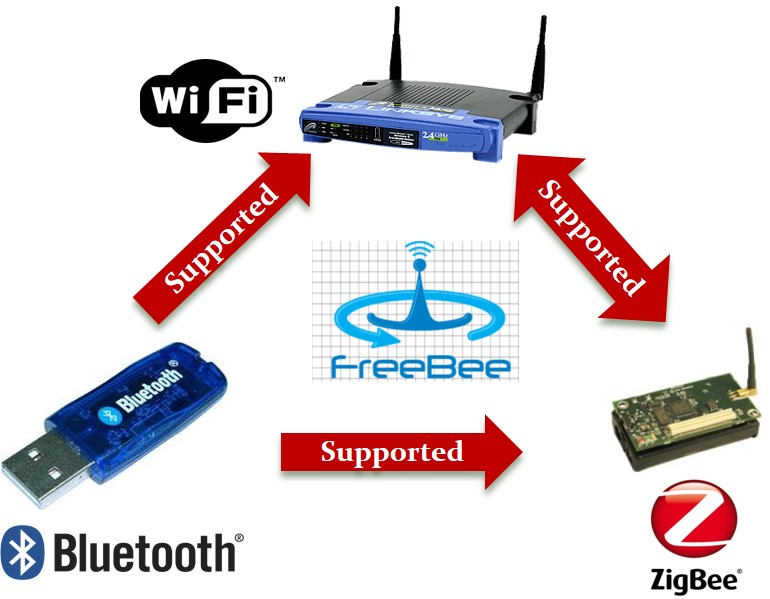 |
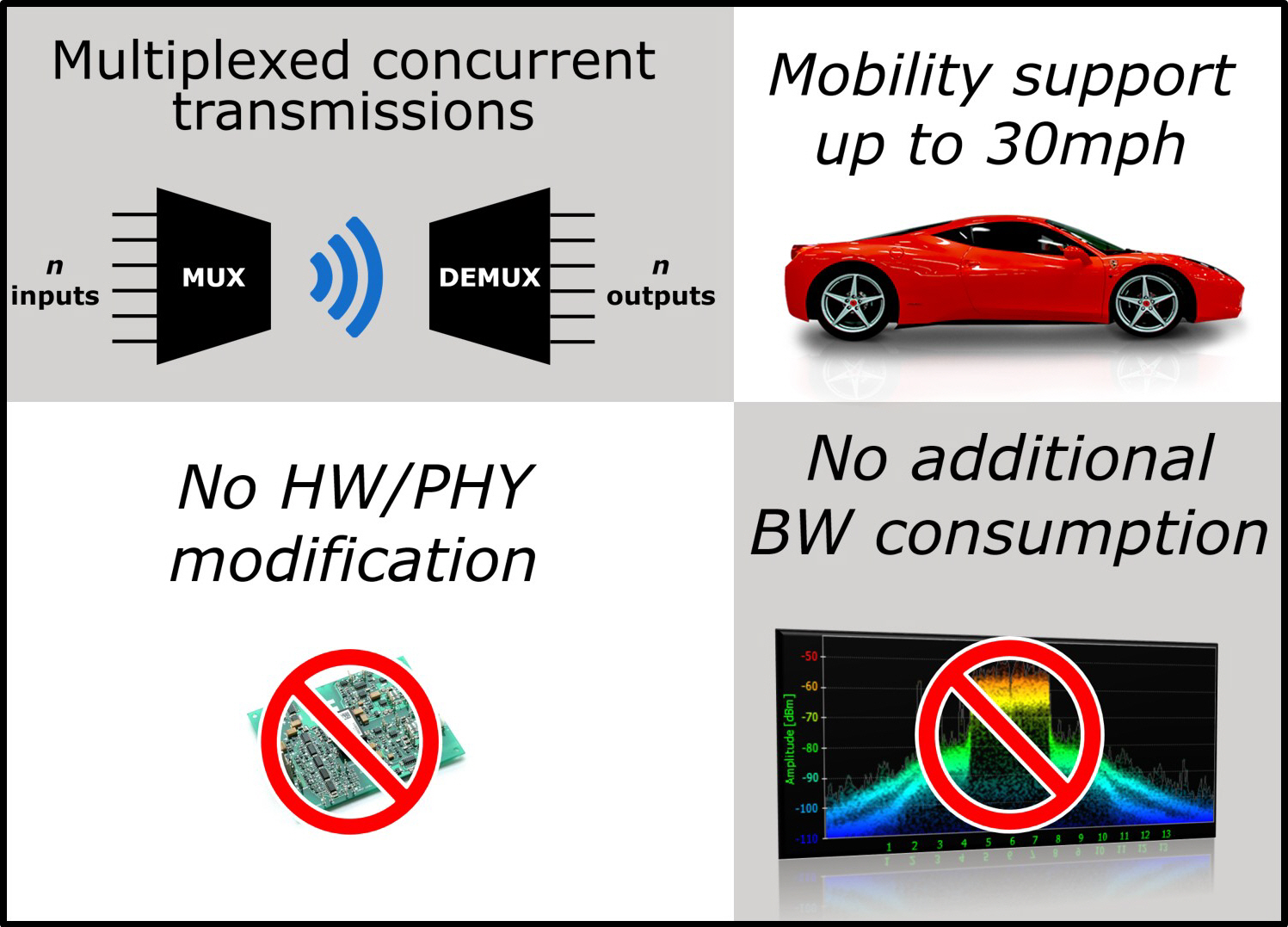 |
|
This work aims to break the barrier between wireless technologies and enable direct communication, using commercial, off-the-shelf devices. The new connectivity between heterogeneous devices empowers interoperability to bring considerable benefits in the IoT era. This includes: (i) efficient usage of the spectrum, (ii) power savings for mobile devices, and (iii) enriched applications through inter-technology information sharing. Our work, named FreeBee, achieves cross-technology communication between WiFi, Bluetooth, and ZigBee for up to 1.4kbps throughput without consumpion of addtional bandwidth, supports mutiple concurrent transmissions, and reliably reaches mobile recievers of up to 30mph. This work has been reported in MobiCom '15 [PDF] and is currently under U.S. provisional patent (Appl. 62/131,080). |
|
Smart LED Demo: FreeBee enables smart operation of an ordinary LED display (often used in retail stores) attached to a ZigBee device, wirelessly controlled by a typical laptop via WiFi. |
|

Song Min Kim
Assistant Professor
Department of Computer Science
George Mason University
Email: song(at)gmu(dot)edu Office: Engineering 5305
Phone: 703-993-6218 Fax: 703-993-1710
CROSS-TECH.COMMUNICATION
WIRELESS COEXISTENCE
 |
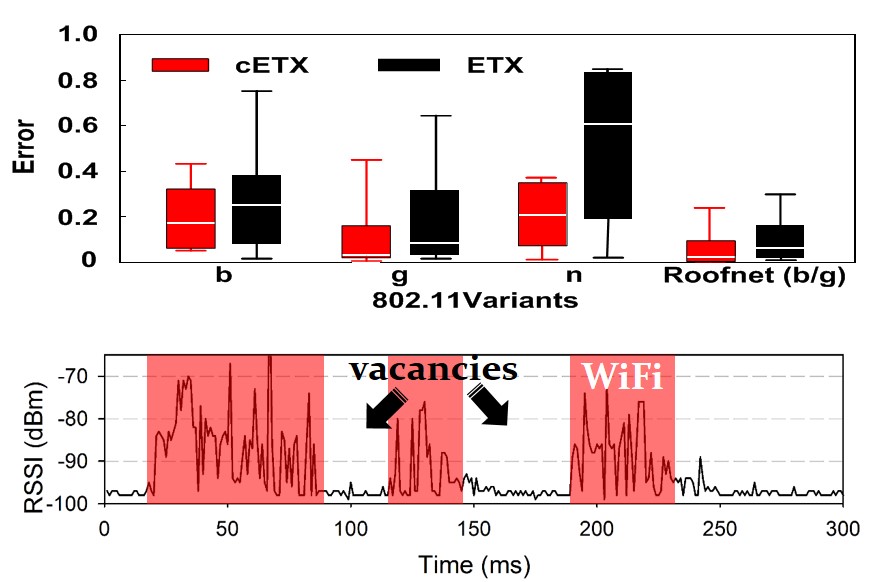 |
Intelligent utilization of the spectrum is critical to survive through the dense IoT environment. In other words, effective channel access in the face of cross-technology interfernce is critical for network performance. Our design enables adative operation to cope with the arbitrary and higly dymanic interference pattern in practice. The design is light-weight and gerneric, such that it is computed and used in-network, and can be embedded to benefit diverse existing network protocols. Evalutations on 9 broadcast and 3 unicast protocols, in multiple indoor and outdoor environments, and under different technologies of WiFi and ZigBee show that our work offers reliable and enhanced network performance and, at the same time, improves spectrum efficiency by lowering channel idle time. This work appeared in SenSys '15. [PDF] |
|
LINK CORRELATION
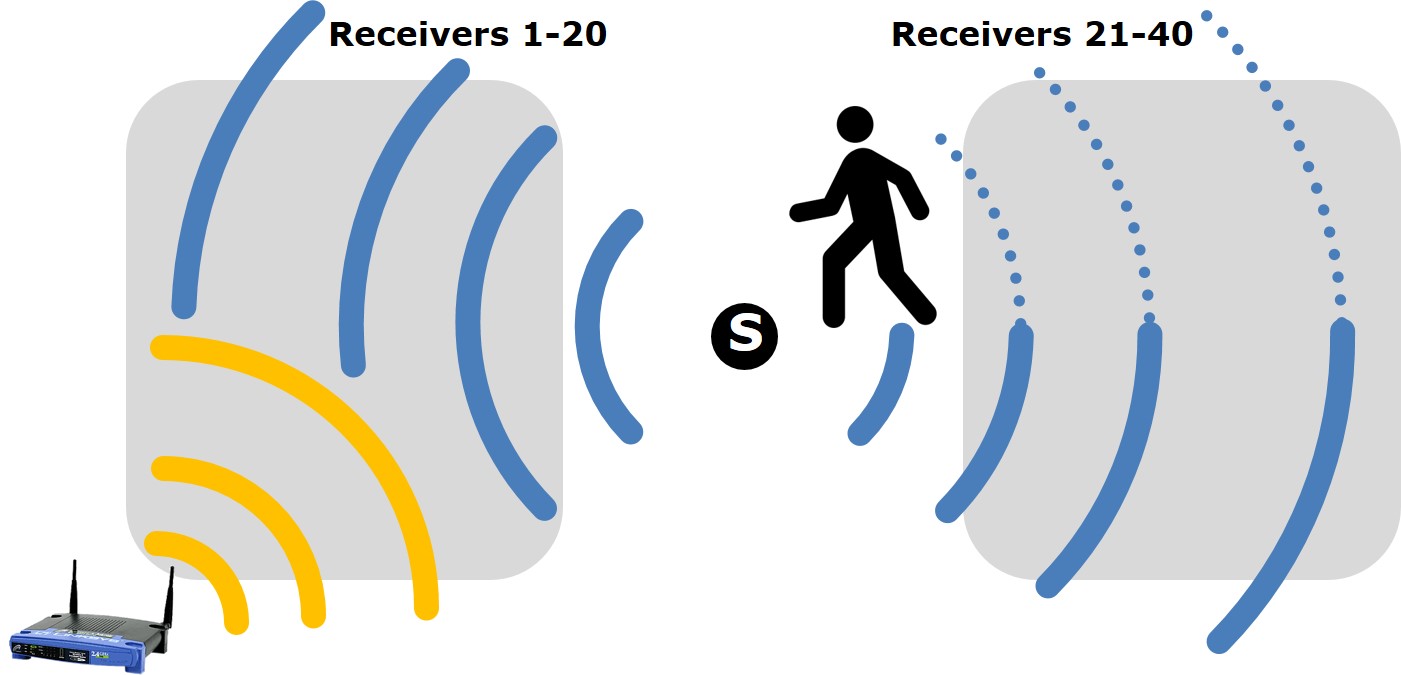 |
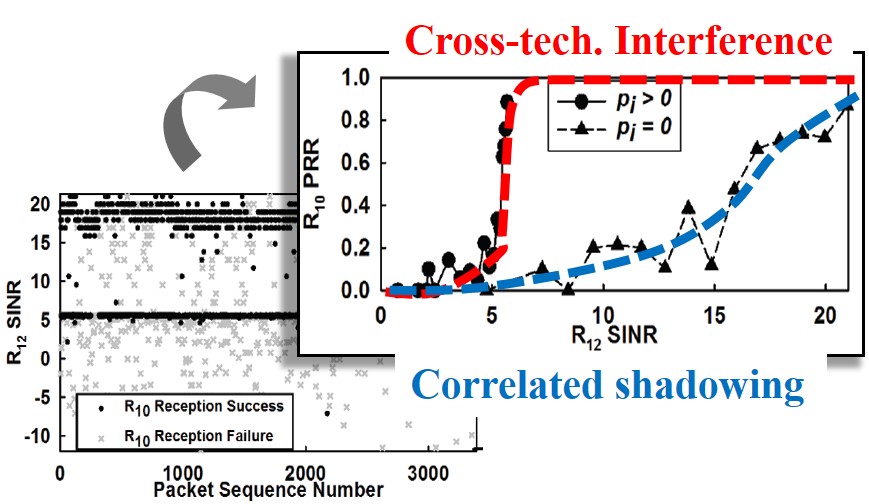 |
Due to isotropic nature of radio waves, wireless signal span a region whose area forms a complex, time-varying shape affected by various factors including interence and obstacles. Link correlation, observed from empirical test-bed, is a real-world phenomenon where packet deliveries across nearby recievers are not independent. This is often caused by cross-technology interference and shadow fading due to large obstacles (e.g., humans). In this work we exploit the spatial patterns of link correlation to infer packet deliveries across nearby receivers, achieved by a machine learning technique with low-cost training (i.e., Logistic regression) affordable to low-end embedded platforms. This enables energy-optimized networking, while keeping the network reliable. This work was published in INFOCOM '15. [PDF] |
|
Link Correlation Demo: Cross-technology interference (e.g., microwave oven and WiFi) in the 2.4GHz ISM band causes links to be correlated. Today's environment is overfilled with numerous wireless devices, where their dynamic traffic generate complex correlation among packet receptions in nearby receivers. |
|
TEST-BEDS
 |
 |
The pursuit of practical solutions with immediate impact is well reflected by my extensive experience in experiments/implementations, performed on fifteen testbeds where some of them shown above. They span indoor (e.g., lab, corridor, large hall), outdoor (e.g., bridge, parking lot, roadside curb), and mobile (e.g., walking, running, riding bicycle or car) scenarios. |
RESEARCHPLATFORMS
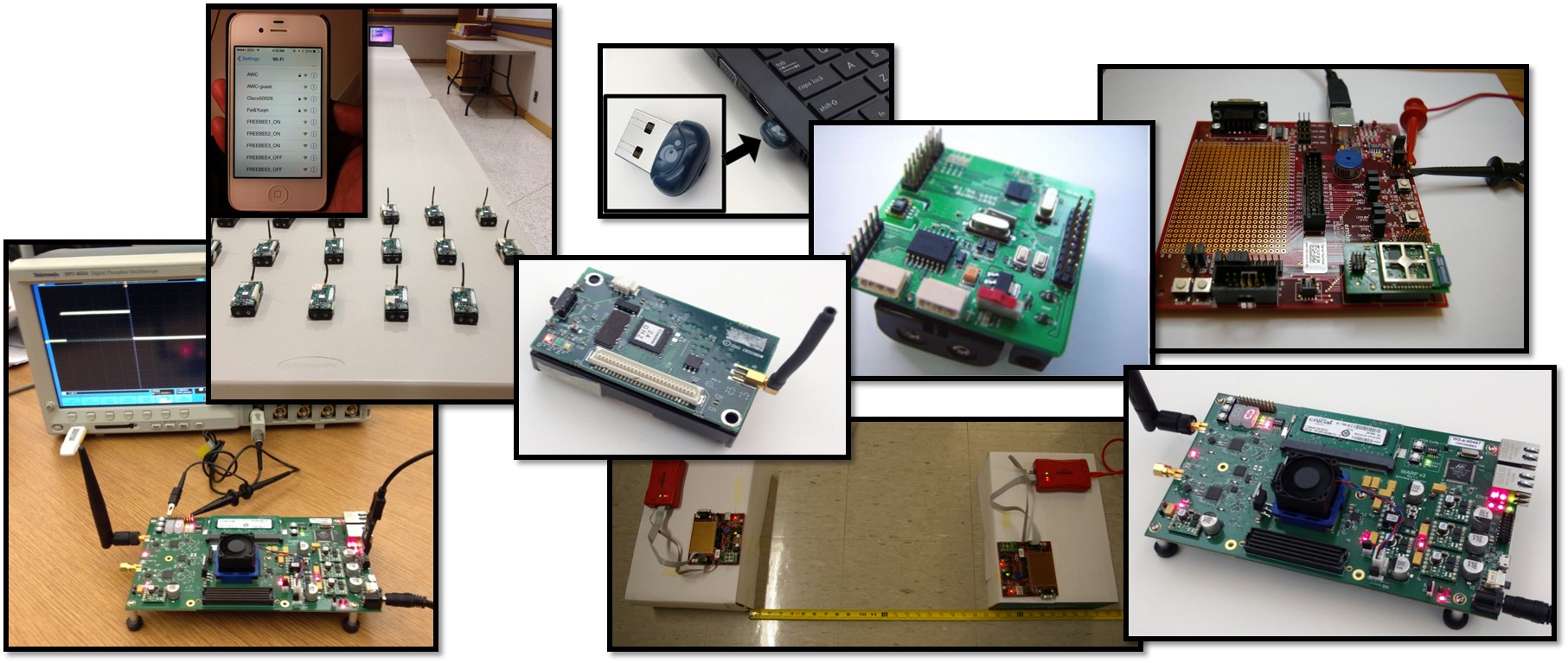 |
Particularly interested in system-oriented wireless designs at RF signal and network protocol levels, my work is implemented on five different off-the-shelf platforms, including WARP (WiFi), MICAz (ZigBee), Bluetooth LE USB dongle, as well as on customized systems. |
CUSTOMHARDWARE
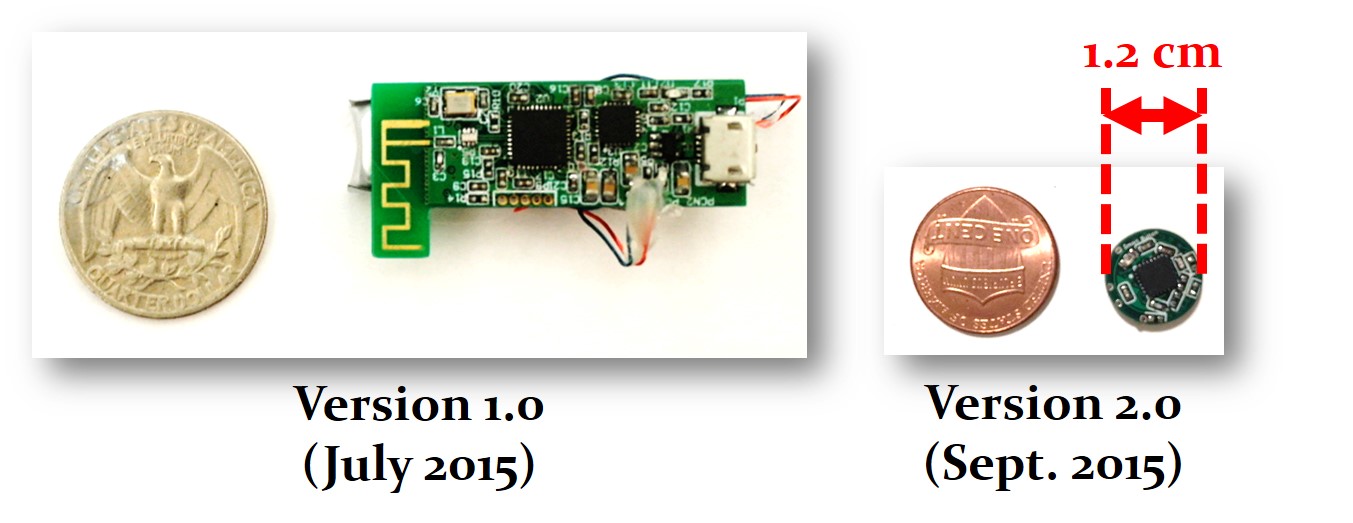 |
In the effort to bring research to life, ultra-low-power/cost systems that take advantage of our FreeBee technique are prototyped. Among the two versions available until now, the second is coin-shaped of only 1.2cm diameter. It may be attached to small objects to grant intelligence and communication capabilities, to potentially enhance IoT. For instance, deployment on sleeve buttons allows exploration and facilitation of human gestures, and further, social interactions. This work has been done in collaboration with Shanghai Jiao Tong University, China. |